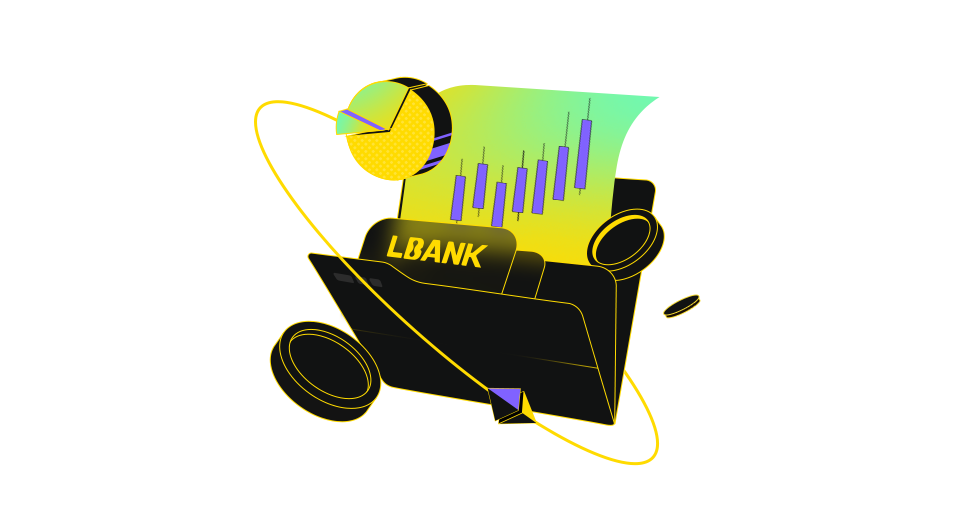"Essential Insights on WalletConnect's Security Features Against Phishing Threats for Beginners."
How WalletConnect (WCT) Protects Against Phishing Attacks
Phishing attacks remain one of the most pervasive threats in the cryptocurrency space, targeting unsuspecting users to steal sensitive information like private keys or seed phrases. These attacks often involve fake websites, emails, or social media messages impersonating legitimate services. WalletConnect (WCT), a decentralized protocol, has emerged as a robust solution to mitigate these risks by enabling secure communication between blockchain wallets and decentralized applications (dApps). Below is an in-depth exploration of how WalletConnect safeguards users against phishing attacks.
### Decentralized Architecture
WalletConnect operates on a decentralized network, eliminating single points of failure that attackers could exploit. Unlike centralized services that rely on a single server, WalletConnect's distributed framework makes it significantly harder for malicious actors to intercept or manipulate user data. This architecture ensures that no single entity controls the connection process, reducing the risk of phishing attempts targeting a centralized system.
### QR Code Authentication
One of WalletConnect's standout features is its QR code-based authentication. When connecting a wallet to a dApp, users scan a QR code displayed by the application. This method ensures that the connection is user-initiated and verified visually, minimizing the risk of fraudulent links or spoofed websites. Since the QR code is generated dynamically and tied to a specific session, attackers cannot easily replicate or intercept it, providing an additional layer of security.
### Web3 Authentication Standards
WalletConnect employs Web3 authentication protocols to verify the identities of both the wallet and the application. This mutual authentication ensures that only trusted and authorized applications can establish a connection with the user's wallet. By validating the legitimacy of both parties, WalletConnect prevents phishing attacks where malicious apps attempt to impersonate legitimate ones to steal user credentials.
### End-to-End Encryption
All data transmitted through WalletConnect is encrypted using state-of-the-art cryptographic techniques. This encryption ensures that sensitive information, such as transaction details or wallet addresses, cannot be intercepted by third parties. Even if an attacker gains access to the communication channel, the encrypted data remains unreadable without the proper decryption keys.
### User Control and Transparency
WalletConnect places full control of the connection process in the hands of the user. Before approving a connection, users can review the details of the requesting application, including its name and domain. This transparency allows users to verify the legitimacy of the application and avoid phishing traps. Additionally, users must manually approve each connection request, preventing unauthorized access.
### Open-Source Development
The open-source nature of WalletConnect allows developers and security experts to audit its code for vulnerabilities. This collaborative approach ensures that potential security flaws are identified and addressed promptly. The transparency of open-source development also builds trust within the community, as users can verify the integrity of the protocol themselves.
### Recent Security Enhancements
WalletConnect has introduced advanced security features to stay ahead of evolving threats. These include multi-factor authentication (MFA) for critical actions and improved encryption protocols to further secure user data. Partnerships with leading blockchain projects and wallets have also strengthened its ecosystem, ensuring widespread adoption of secure connection standards.
### Community and Regulatory Impact
The growing adoption of WalletConnect has fostered a community-focused approach to security. Users and developers actively participate in discussions about best practices and threat mitigation. However, as decentralized protocols like WalletConnect gain prominence, they may attract regulatory scrutiny. This could lead to new standards for secure wallet connections, further enhancing user protection.
### Conclusion
WalletConnect's combination of decentralized architecture, QR code authentication, Web3 verification, encryption, and user control makes it a powerful tool against phishing attacks. Its open-source model and continuous security improvements ensure that it remains resilient against emerging threats. As the cryptocurrency ecosystem expands, WalletConnect's role in safeguarding users from phishing will be increasingly vital, setting a benchmark for secure wallet interactions in the Web3 space.
By leveraging these features, WalletConnect not only protects users but also promotes a safer and more trustworthy environment for decentralized finance (DeFi) and blockchain applications.
Phishing attacks remain one of the most pervasive threats in the cryptocurrency space, targeting unsuspecting users to steal sensitive information like private keys or seed phrases. These attacks often involve fake websites, emails, or social media messages impersonating legitimate services. WalletConnect (WCT), a decentralized protocol, has emerged as a robust solution to mitigate these risks by enabling secure communication between blockchain wallets and decentralized applications (dApps). Below is an in-depth exploration of how WalletConnect safeguards users against phishing attacks.
### Decentralized Architecture
WalletConnect operates on a decentralized network, eliminating single points of failure that attackers could exploit. Unlike centralized services that rely on a single server, WalletConnect's distributed framework makes it significantly harder for malicious actors to intercept or manipulate user data. This architecture ensures that no single entity controls the connection process, reducing the risk of phishing attempts targeting a centralized system.
### QR Code Authentication
One of WalletConnect's standout features is its QR code-based authentication. When connecting a wallet to a dApp, users scan a QR code displayed by the application. This method ensures that the connection is user-initiated and verified visually, minimizing the risk of fraudulent links or spoofed websites. Since the QR code is generated dynamically and tied to a specific session, attackers cannot easily replicate or intercept it, providing an additional layer of security.
### Web3 Authentication Standards
WalletConnect employs Web3 authentication protocols to verify the identities of both the wallet and the application. This mutual authentication ensures that only trusted and authorized applications can establish a connection with the user's wallet. By validating the legitimacy of both parties, WalletConnect prevents phishing attacks where malicious apps attempt to impersonate legitimate ones to steal user credentials.
### End-to-End Encryption
All data transmitted through WalletConnect is encrypted using state-of-the-art cryptographic techniques. This encryption ensures that sensitive information, such as transaction details or wallet addresses, cannot be intercepted by third parties. Even if an attacker gains access to the communication channel, the encrypted data remains unreadable without the proper decryption keys.
### User Control and Transparency
WalletConnect places full control of the connection process in the hands of the user. Before approving a connection, users can review the details of the requesting application, including its name and domain. This transparency allows users to verify the legitimacy of the application and avoid phishing traps. Additionally, users must manually approve each connection request, preventing unauthorized access.
### Open-Source Development
The open-source nature of WalletConnect allows developers and security experts to audit its code for vulnerabilities. This collaborative approach ensures that potential security flaws are identified and addressed promptly. The transparency of open-source development also builds trust within the community, as users can verify the integrity of the protocol themselves.
### Recent Security Enhancements
WalletConnect has introduced advanced security features to stay ahead of evolving threats. These include multi-factor authentication (MFA) for critical actions and improved encryption protocols to further secure user data. Partnerships with leading blockchain projects and wallets have also strengthened its ecosystem, ensuring widespread adoption of secure connection standards.
### Community and Regulatory Impact
The growing adoption of WalletConnect has fostered a community-focused approach to security. Users and developers actively participate in discussions about best practices and threat mitigation. However, as decentralized protocols like WalletConnect gain prominence, they may attract regulatory scrutiny. This could lead to new standards for secure wallet connections, further enhancing user protection.
### Conclusion
WalletConnect's combination of decentralized architecture, QR code authentication, Web3 verification, encryption, and user control makes it a powerful tool against phishing attacks. Its open-source model and continuous security improvements ensure that it remains resilient against emerging threats. As the cryptocurrency ecosystem expands, WalletConnect's role in safeguarding users from phishing will be increasingly vital, setting a benchmark for secure wallet interactions in the Web3 space.
By leveraging these features, WalletConnect not only protects users but also promotes a safer and more trustworthy environment for decentralized finance (DeFi) and blockchain applications.
Related Articles
How are RWAs different from traditional financial assets?
2025-05-22 10:16:47
How does DeFi differ from traditional finance systems?
2025-05-22 10:16:47
Can you elaborate on how equitable distribution is achieved in the new tokenomic model?
2025-05-22 10:16:46
What implications does this collaboration have for blockchain gaming acceptance?
2025-05-22 10:16:46
How does U.S. Steel Corporation's performance compare to its competitors in light of the new price target?
2025-05-22 10:16:46
Are there fees associated with different deposit methods on Binance?
2025-05-22 10:16:45
How complex are DeFi protocols involved in yield farming as mentioned in the research news about CoinGecko's Earn Platform?
2025-05-22 10:16:45
How important does Buterin consider institutional adoption of cryptocurrencies?
2025-05-22 10:16:45
What types of insights or findings should be highlighted during the analysis of news articles?
2025-05-22 10:16:44
What role do stablecoins play in facilitating transactions within the cryptocurrency ecosystem?
2025-05-22 10:16:44
Latest Articles
How does DeFi differ from traditional finance systems?
2025-05-22 10:16:47
How are RWAs different from traditional financial assets?
2025-05-22 10:16:47
Can you elaborate on how equitable distribution is achieved in the new tokenomic model?
2025-05-22 10:16:46
What implications does this collaboration have for blockchain gaming acceptance?
2025-05-22 10:16:46
How does U.S. Steel Corporation's performance compare to its competitors in light of the new price target?
2025-05-22 10:16:46
How complex are DeFi protocols involved in yield farming as mentioned in the research news about CoinGecko's Earn Platform?
2025-05-22 10:16:45
Are there fees associated with different deposit methods on Binance?
2025-05-22 10:16:45
How important does Buterin consider institutional adoption of cryptocurrencies?
2025-05-22 10:16:45
What is Mashinsky's perspective on the role of self-regulation within the crypto industry?
2025-05-22 10:16:44
What role do stablecoins play in facilitating transactions within the cryptocurrency ecosystem?
2025-05-22 10:16:44

Limited-Time Offer for New Users
Exclusive New User Benefit, Up to 6000USDT
Hot Topics
Technical Analysis

1606 Articles
DeFi

90 Articles
MEME

62 Articles
Cryptocurrency Rankings
Top
New Spot
Expand
Fear and Greed Index
Reminder: Data is for Reference Only
73
Greed





